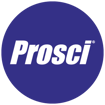Improving Project ROI

Sunflower Electric Power Corporation is a not-for-profit, wholesale electric generation and transmission utility company serving seven electric distribution utilities in central and western Kansas. Founded in 1957 and with approximately 400 employees, the company’s mission is to provide reliable, long-term power supply and transmission services to its member-owners at the lowest possible cost based on sound business and cooperative principles.
Until several years ago, change management wasn’t a standard practice at Sunflower. At the time, a large Oracle® Fusion implementation was underway and experiencing challenges. The company’s legacy ERP system implementation faced similar challenges, so resistance to the current ERP implementation ran high.
From demo project to building change capability
The Oracle Fusion ERP system would impact employees across the organization, delivering capabilities related to timecards, expense reports, work orders, purchase orders and more. The system would also offer cybersecurity, financial and system integration benefits.
Although the project had been underway for over two years, leadership decided to bring change management to the project in the hopes of shifting the project’s trajectory and achieving good project outcomes. The company lacked a broad change management capability, however, several individuals were Prosci Certified Change Practitioners. In addition, key individuals attended Prosci’s Enterprise Change Management (ECM) Boot Camp to assess the organization’s change maturity level and consider the potential for enterprise-wide change management.
A change management litmus test
The change practitioners tapped for the Oracle Fusion project moved quickly to develop and implement a change management strategy for the project.
“Given the project timeline and solid resistance to a previous ERP implementation, we knew we needed a proactive, innovative approach to managing this important change,”
— John Ross, Strategic Change Administrator
The strategy included components such as the Prosci Methodology and the ADKAR® Model framework, tools such as the Prosci Change Scorecard, a project management dashboard, and weekly change agent coalition meetings.
Following the project go-live, surveys and other assessment methods revealed substantial benefits to applying Prosci change management on the Oracle Fusion project. Once leadership recognized the value change management could bring to other projects, they decided to develop change capabilities across the organization centered on the Prosci Methodology. “We evaluated numerous change management methodologies, but the Prosci Methodology seemed to be the most complete, plus the methodology is backed by research,” says Ross.
Organizational Change Management initiative
Building on the strategies and lessons learned from the Oracle Fusion change project, Sunflower moved forward with its Organizational Change Management (OCM) initiative. Prosci Master Instructors facilitated an onsite Prosci ECM Workshop for managers and Change Management Sponsor Briefing. In these sessions, Prosci engaged and educated Sunflower executives and emergent leaders about their important change management roles and to ensure strategic alignment.
To support the company-wide OCM initiative, Sunflower secured a Prosci ECM License for access to Prosci tools and resources to further embed change management into the organization. The company leverages Prosci eLearning, a component of the license, to educate current and incoming employees about change management, and to support individuals in leading and thriving through change. Says Ross,
“The virtual Prosci eLearning format allows employees to move through the modules at their own pace, which is very helpful. Through the modules, we’re developing a common language for change, which supports our OCM initiative.”
Sunflower delivers custom workshops as well, based on current project needs and resources assigned to the projects. Ross facilitates workshops such as Foundations of Leadership, Basic Change Management, Intermediate Change Management, and Advanced Change Management.
“These workshops push the staff to think as change practitioners, plus they help align project leads and subject matter experts with our change management plans,” says Ross.
From the initial engagement with Prosci, through the change management test drive on the Oracle Fusion project, and through its OCM initiative, Sunflower has made great strides in setting up the organization for change success. Below are some highlights of their progress:

Results
A change-ready culture
Today, Sunflower Electric deploys change management from a solid foundation of organizational change capabilities amid a change-ready culture.
“We’ve created a lot of enthusiasm for change management,” says Ross. “In fact, ‘ADKAR’ has become a catchphrase, which serves us well in our change management activities.”
Sunflower change practitioners actively apply Prosci change management on high-impact projects such as the following:
SUN-NET Renovation
This enterprise-wide, ongoing IT project involves redeveloping the company’s Microsoft® SharePoint® sites for every department. The goal is to improve the effectiveness of the intranet as a communication tool and its document retention, retrieval and storage functionality. With massive inherent data and stringent regulatory requirements, plus its impacts to everyone in the organization, the risks are high.
In addition to training for all site owners who focus on the technical side of the project, all employees attend workshops that help them understand how the changes impact them individually. Project teams are especially focused on the ADKAR Model’s Awareness and Desire elements, using videos and face-to-face meetings before the start of each site project to help prepare individuals for the change. With each project, change managers are fine-tuning their overall change management approach.
Mobile Device Field Automation
Previously, Sunflower field technicians conducting line and substation inspections used paper spreadsheets in the field to document their audits. These inspections involved using hundreds of spreadsheets to track 31,000 assets, including 12,000 substations and 19,000 transmission lines. Replacing this outdated process with a mobile application accessed in the field via laptops would centralize data and create new efficiencies, support related compliance objectives, and elevate decision-making.
This digital transformation project, which lasted several years, was a huge shift for those impacted. Change practitioners used ADKAR Assessments to gauge resistance and understand any barriers to the change. The change team then worked with project leads to adjust how they were communicating and engaging with the field about the changes to come. Near the end of the project, the change team addressed the Ability and Reinforcement elements of the ADKAR Model, where they helped identify any adoption issues and developed strategies for resolving them.
Combined with many other change management activities, the integrated project management and change management approach led to a highly successful project outcome and significant operational benefits.
Looking Ahead

Through building change capability, Sunflower has achieved its main objective of improving project results. But the work continues.
With recent changes to the leadership team, another onsite Prosci Change Management Sponsor Briefing is scheduled in the coming months. The team is also in the process of developing additional customized workshops that include Change Management for Managers and Supervisors (based on the Prosci CLARC model), and Psychological Safety and Change Management. In addition, Ross will leverage his Prosci Train-the-Trainer credentials to deliver role-based Prosci training internally to managers, front-line employees, project leads, and others.
Ross attributes the organization’s success in developing a change capability to several main factors. “Prosci eLearning has enabled a grassroots approach to building capability,” says Ross. “Managers and subject matter experts understand change management and are stepping forward and asking the right questions.” He also stresses the importance of giving project successes visibility, which promotes change management buy-in from both leaders and those impacted by change.
Also important, says Ross, is the relatability of the Prosci Methodology. “Prosci has made it very easy for employees to understand what change management is and for us to engage with them based on the Prosci 3-Phase Process,” he says, adding,
“Change management is so complex, but kudos to Prosci for taking their research and making it easy. Everyone here understands ADKAR.”

Founded in 1994, Prosci is a global leader in change management. We enable organizations around the world to achieve change outcomes and grow change capability through change management solutions based on holistic, research-based, easy-to-use tools, methodologies and services.






/Case%20Study%20Graphic-01.webp?width=175&name=Case%20Study%20Graphic-01.webp)
